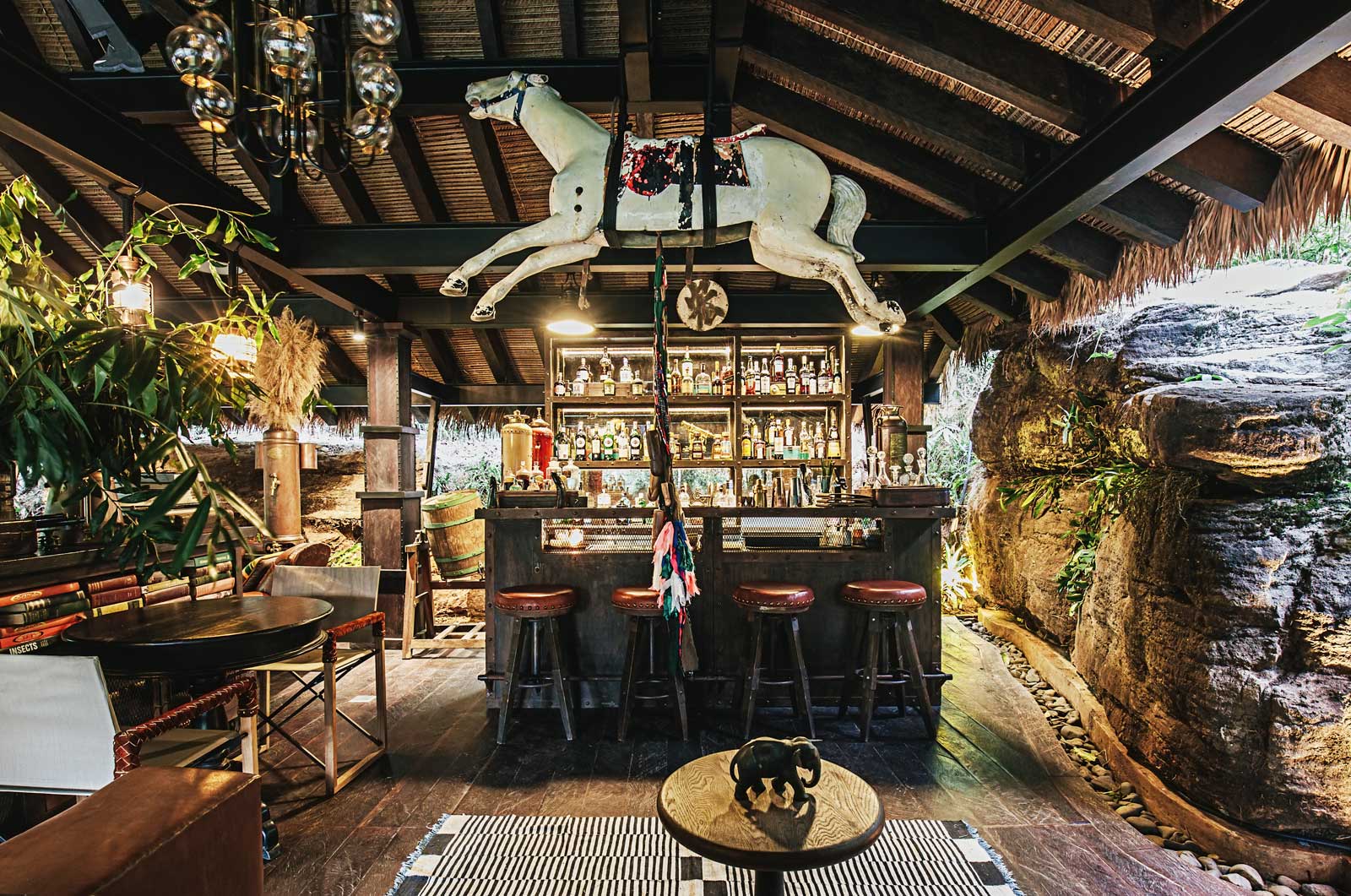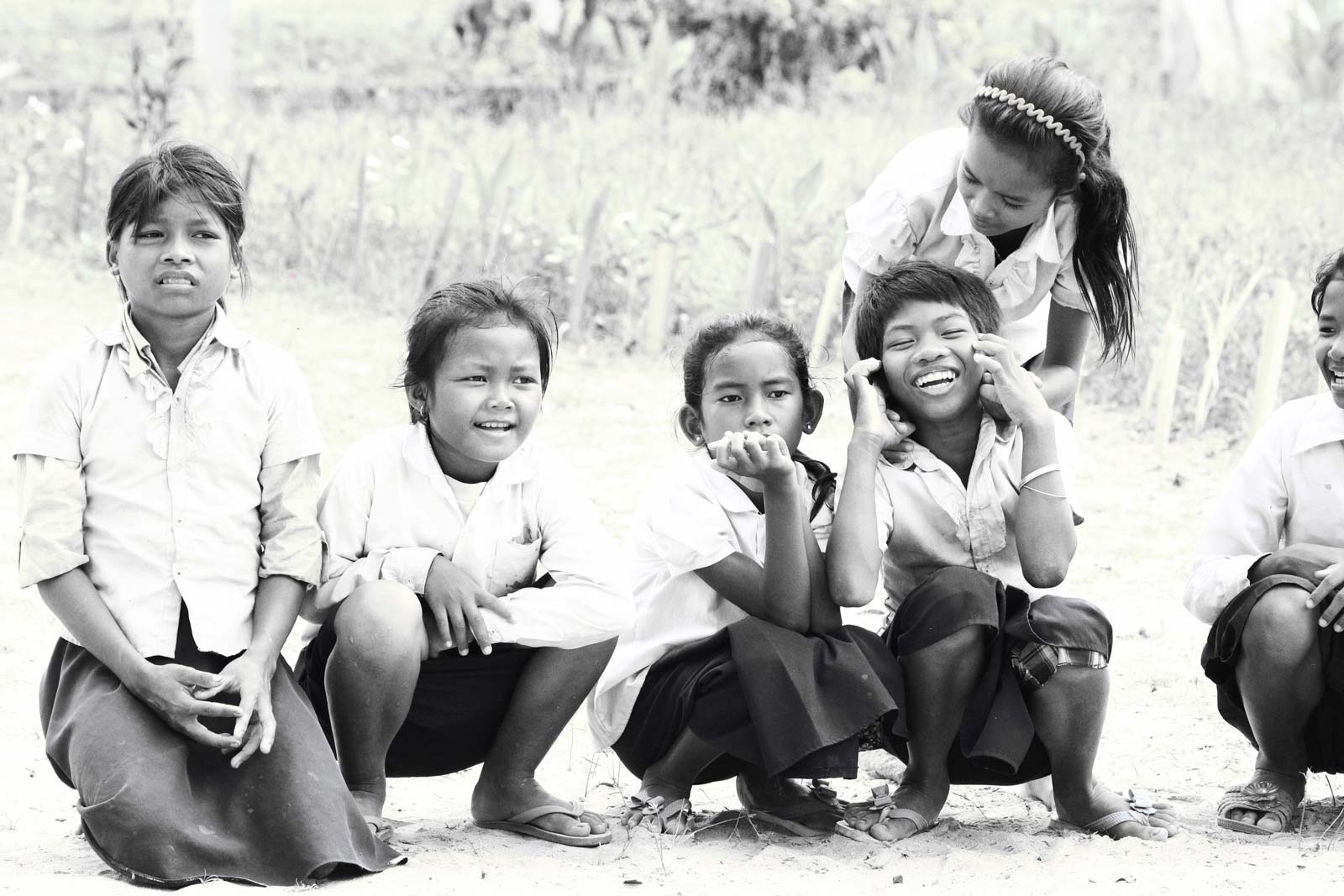Saving the Planet is a nifty slogan, with widespread appeal among environmentalists, officials at lipstick manufacturers and luxury companies alike. Yet few organisations offer substantive ways to do this; forsaking straws at the cocktail bar of your beachside resort represents but a tiny drop in a sea of fish-choking plastic. The problem with a potentially catastrophic challenge on the scale of climate change is always the same – how to have a genuine impact, and where to start.
Architect and hotel designer extraordinaire Bill Bensley offers a quantum leap with his new Shinta Mani Wild, a luxurious resort in southern Cambodia. With 15 out-of-this world villas tucked amongst pristine jungle along the raging Thmor Rung River, this is the ultimate fantasy nature resort for upscale travelers. It’s also classic Bensley, as villas abound with antiques and art, and each boasts a unique theme, from botanical and explorer motifs to a quirky riff on Jackie Kennedy, who visited Cambodia in the 1960s. One spectacular option for checking in is to soar over the rainforest and a waterfall on Southeast Asia’s longest zipline, right into the lodge’s lounge area.







Water and jungle – everywhere. And a playground in the wild for the lucky few. Southeast Asia’s longest zipline ride (above) may end with a cocktail. The $15 million Shinta Mani Wild experience is as exclusive as it gets in the Kingdom – and comes at a price. At time of publication, a week in one of the luxury tents (second left from top) comes at $17, 500 – including breakfast, and a host of activities allowing for the holiday of a lifetime. Photos: Supplied

Combining luxury trappings with genuine sustainability concerns may seem an odd marriage, much like the very contradictory precepts of eco-tourism. But this is all part of Bensley’s overriding and ambitious aim – to Save the Planet.
Travel writers wrangle with this contradiction constantly, and I’ve often noted that the best protection for the ecological virtues of any place is to not write about it, don’t consume vast amounts of fossil fuel to fly then drive to the planet’s most precious outposts, and don’t promote their development.
Of course, the reality of globalisation means that now virtually everywhere is connected, and reachable from almost everywhere else. Since nowhere can stay in isolation anymore, the responsibility for protection falls on everyone, everywhere. And few are offering new approaches as bold as Bensley.
Renowned for resorts like Four Seasons Tented Camp and Golden Triangle, both in northern Thailand, the Capella Ubud in Bali, the Intercontinental Danang and J. W. Marriott, both in Phu Quoc, Vietnam, and the Rosewood, Luang Prabang in Laos, Bensley has long been an environmental advocate. Visitors are often mesmerised by his extravagantly colourful designs, but his properties all demonstrate a keen appreciation of local culture, history and tradition.
Over the course of his career, Bensley has risen from lush gardens as an accomplished landscape architect to an overall hotel maestro, handling everything from overall architecture to hotel interiors, restaurant decor and even hotel uniforms. Through it all, he’s been an environmental warrior and champion of local culture and causes. His battles with developers to spare the cutting of trees, whatever the cost, are exemplary in an industry that typically espouses environmental causes only after construction is complete.
And Bensley is the rare hospitality leader who is putting his own time, and money, where his mouth is. He is a benefactor of the Shinta Mani Foundation, which provides community assistance, clean water and hospitality training in Siem Reap, Cambodia. Bensley has created several hotels in the city, best known as the gateway to the ancient Angkor capital. Shinta Mani offers vital vocational training in hospitality, one of the few growth industries in what is among the world’s poorest countries. The Bensley-designed hotels help maintain the foundation’s near 100% placement ratio for graduates. The hotels also operate as clever charities, delivering great service and guest experience, with all profits going to the foundation.
Still, Bensley took things to the next level with Shinta Mani Wild. Set on 400 hectares of land he purchased a decade ago, Bensley has invested $15 million in this unique retreat located in the unlikeliest of locations – lush jungle near the Kirirom and Cardamom Mountains parks. Visitors can trek in the wilderness, opt for boat rides, or soak under the stars in a massive tub on a terrace where they may as well be all alone in the universe.
The property has launched Cambodia onto all the world’s best lists, and Time Magazine went further, naming Shinta Mani Wild as one of the World’s Great Places. Amidst all the accolades, we caught up with Bensley at his design studio in Bangkok – his home for three decades, after stints in Hong Kong, Singapore and Indonesia – he shows off a massive warehouse, filled with historical treasures – books, art and antiques – collected from every corner of the planet. In another age, he’d be celebrated as a Royal Geographic Explorer. But today, he modestly maintains: “I’m just a packrat.”







The Shinta Mani Foundation provides community assistance and clean water in Siem Reap, Cambodia, as well as dental care for thousands of children. Shinta Mani also offers vital vocational training in hospitality, a fast-growing industry in Cambodia. The hotels maintain the foundation’s near 100% placement ratio for graduates and operate as charities, delivering great service and guest experience. Photos: Supplied

Tell us how you acquired the Shinta Mani Wild property, and what you planned to do with it? Did the concept evolve, or come at the very start?
I shop a lot. In fact, I am a shopaholic. When something rare and wonderful comes to the market I buy first and think later. That is was what happened here. We purchased this gorgeous piece of land and the river and the waterfalls all without a plan.
Some people say Cambodia is not ready for such a luxurious, exclusive resort of this kind. What do you think?
I believe if you build something good, people will come. And if you build something good that has a real purpose for making the world a better place, even better.
Shinta Mani Wild has been showered with praise and awards, and tops all the world’s best lists. Were you surprised by the reaction?
Without trying to sound overconfident, not really. All our projects garnish great awards.
You have spent much of your career in Asia, living and working in Bali and Bangkok. Why has Cambodia become the focus of so much of your work and philanthropy, and how have the country and people touched you in ways different than the rest of Asia?
Good question. Cambodia has touched me in that she is my neighbour – I live in Bangkok – and she is in much greater need than Thailand or any of or other neighbours.
Over your career, you have grown from landscape architecture to hotel architecture, interior design, and complete responsibility for the design and development of hotels, even uniforms and staff operation. How do you see your role nowadays in resorts?
My role is to create a seamless experience, where every aspect of the hotel grows from the same seed batch.
But which title do you like the best?
Head Gardener.
How do you see your role nowadays in resorts?
I see my role now as teaching architects how to build with sensible sustainability. I’m writing a small book that I will distribute to all 325 major hotel chains for them to include in their Building Standards. I figure a few architects might get a kick out of what I have learned these last 36 years and actually build something more sustainable and respectful of nature.
Few in hospitality achieve this sort of involvement or impact. Your resorts have become acclaimed works of art, like resort theme parks on the grandest scale. How does that empower your creativity?
It seems the more projects that we do the easier it is to convince clients to go down the untrodden path. Much of my design team has been with me for 20+ years, some over 30 years. I point to my wonderful friends in my studio that have been so very creative day in and day out. The reason we are successful is my team of 100+. I often joke with them, ‘You do all the work and I get the credit!’ Everyone laughs and keeps drawing!
What were the hardest challenges with Shinta Mani Wild?
Actually it was the hardest project I have ever built as it is so much easier to spend someone else’s money!
How did you tackle all the challenges, and what are your greatest achievements?
Persistence and belief that we were doing the right thing. And what you feel are your greatest achievements? I love the fact that we have created one of the world’s top adventure destinations and have had virtually zero impact on the land. It disappears as it should, into the forest.
How do you think this property will impact Cambodia in the future in terms of tourism, resort development and conservation?
I think that we may have helped sway the opinion of the Cambodian government that the conservation of the Cardamom Rainforest might be more important than the extraction of her resources.

We live in an era where much talk in tourism is about sustainability and authenticity. Can resorts of this kind be economically viable?
Nothing makes me madder than greenwashing [making unsubstantiated claims about the positive environmental impact of a service or product]. We hear it all the time from our esteemed hotel community. Shinta Mani Wild, ticks every box that I stand for. We are the first Asian hotel company to completely wean ourselves from all single-use plastics, including the supply chain (that is the hard part) – tick. We have a serious purpose of protecting a huge swath of the southern Cardamoms from illegal logging and poachers – tick. In doing so we have given the local villagers a choice of a better life – tick.
What ambitious new projects do you have in the works?
WorldWild [a safari-style nature reserve in China] could be the project that is the most influential. A huge piece of land north of Guangzhou is 95% dedicated to the betterment of mistreated zoo animals to run free while 5% of the land is for human zoos. I’m joking of course, but the idea is to create a place that gives animals the utmost respect and top-shelf treatment. Hyatt, Hilton, Conrad, Waldorf, perhaps Four Seasons and Shinta Mani Wild Bensley Collection have all signed up as hoteliers on the periphery of this park that has the ability to sway Chinese opinion on the value of our environment. Millions will visit every year. That is a project with a real purpose!
How would you like to be remembered? What should your tombstone say?
He rocked!


